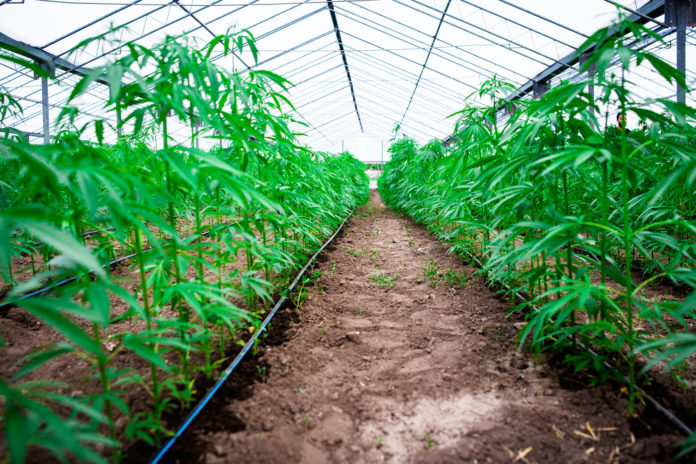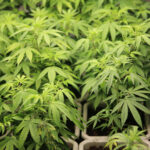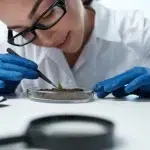Without a doubt, cultivation practices have an enormous effect on plant quality and harvest quantity. Deciding which methods are most beneficial is a complex equation with variables including terroir, plant genetics, cultivator preferences, economic considerations, and consumer demand. There is no one-size-fits-all solution.
Nevertheless, growers produce great product every day. Regardless the size of the cultivation operation, with the proper methods, products and equipment, vision, and skill, growers can reach their goals. The keys often lie in optimizing grow environment and learning from experts.
Outdoor agronomy
In temperate zones, outdoor cultivation may be the best option. Because outdoor growing uses the sun’s heat and light, farming often leaves a smaller carbon footprint than other methods.
That doesn’t mean outdoor cultivation is easy or inexpensive. To ensure a good, and profitable, harvest, farmers must engage in copious research on garden site, soil quality, fertilizer safety, dealing with pests, and complying with regulations, among other things.
According to Sensi Seeds’ grow ambassador Seshata, exquisite soil is the essential foundation for success. “Soil should be checked to determine pH, and if it is too low or too high then additives such as lime or sulphur must be mixed in. Lime makes the soil more alkaline, increasing pH, and sulphur decreases pH by making the soil more acidic,” she said. “Cannabis thirsts for loamy soil, or soil that consists of lots of sand and silt.”
Picking the right planting spot is crucial, too. “The ideal spot for growing cannabis outdoors should be sunny, sheltered, well-irrigated, and have good drainage,” Seshata said. “It will also be far enough off the beaten track that little human activity occurs in the vicinity.”
And, of course, the right strains for the location make all the difference. “This is very important,” said Seshata. “Depending on your location and climate, you may be limited in your choice of strain. For example, if you are growing in regions in the far north or south of the globe, where year-round temperatures are cool and summer growing seasons are short, you will need to choose strains that are acclimated to such conditions.”
Indoor cultivation
Almost all indoor grows are hydroponic operations because traditional soil cultivation isn’t practical. Lighting and ventilation systems, energy requirements, and the need for special equipment, substrates, and nutrients can make hydro cultivation quite expensive. According to the Happy Pot Farmer, though, the bigger costs may be mitigated by using coco coir. “Coco grows in small tents with a 400- or 600-watt metal halide (MH) and high-pressure sodium (HPS) air-cooled light setup are a good option for beginners looking to get the benefits of hydroponic feeding without expensive hydro equipment,” Happy noted. “You’ll also need to factor in nutrients and electricity costs.”
Although equipment specifications vary with size and format of the operation—rooms vs. tents vs. warehouses—lights, a light timer, light hanger cables, fans, and a ventilation system are necessities. Happy likes to use 600-watt or larger MH/HPS systems. “Six-hundred-watt and larger MH/HPS setups benefit from air-cooled lighting hoods,” Happy said. “To reduce odors from exhausted air, carbon filters are a must. Fan controllers allow you to use a larger fan at a slower speed to reduce noise and vibration.” LED lights are effective and use less energy but produce less heat than MH/HPS bulbs.
Happy prefers growing clones rather than seeds because clones have verifiable DNA, assuring farmers their plants will perform exactly as expected. “If you have access to clones, you can ensure a new generation of female plant stock identical to the parent,” Happy said. “Keeping a mother plant in the vegetative state ensures a steady supply of reliable clones.” When seeds are used, Happy suggested germinating at least twice as many as you intend to raise. “Males will need to be removed to prevent females from growing seeds,” Happy said. “Feminized seeds prevent unwanted males but aren’t suitable for creating clones since they tend to become hermaphrodites [plants bearing both male and female reproductive organs].”
Greenhouse growing
Greenhouse considerations include location, humidity, and cost. According to greenhouse expert Audrey Livingston, pre-production budgets are especially important for this type of grow. “With each decision to be made about your prospective greenhouse, there will be a fee attached,” she said. “Such decisions will include the style of structure; utilities to use, including power, water, and gas; materials to use in the construction, like whether to go with plastic or a corrugated covering; and additional equipment setups, such as air conditioning, heating, dehumidification, and environmental control systems.” Greenhouse growers need good insurance protection, too, as the customizations entail a large financial investment. “What works for Colorado may not work for California or Oregon or Alaska, etc.,” Livingston said.
All the preparation and investment will be wasted without the right master grower. “Because cannabis has remained federally illegal due to its Schedule I classification, many growers learned the trade through practices passed down by other farmers and cultivators,” she noted. “Look for a grower who has an undergraduate degree in botany or horticulture and who has practical experience working as an adaptable farmer.”
She also suggested greenhouse growers automate as much environmental control as they can. “Systems like Link4 and Argus Controls act as the brain of the greenhouse,” she said, helping temperature consistency and soil moisture levels. “Don’t even try greenhouse growing without a dehumidification system,” Livingston warned. “Like environmental control systems, dehumidification systems are technologically smarter when understanding humidity levels and how to fluctuate accordingly.”












